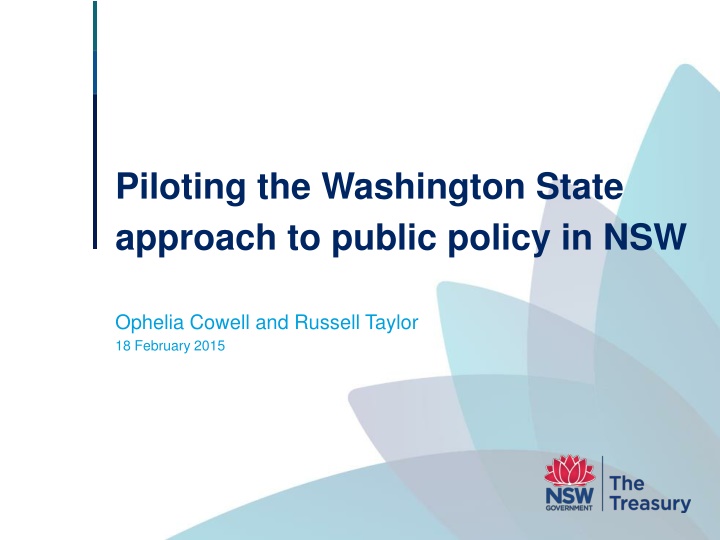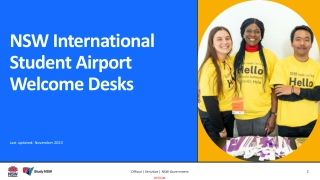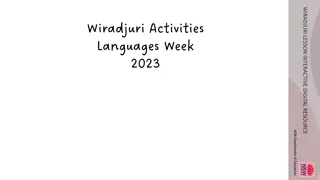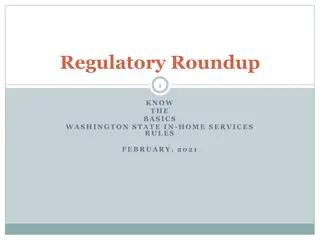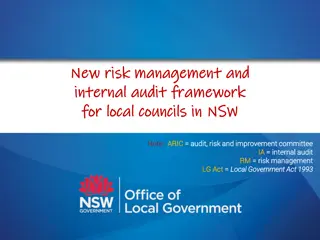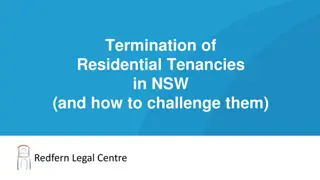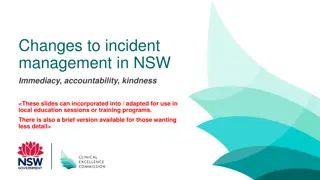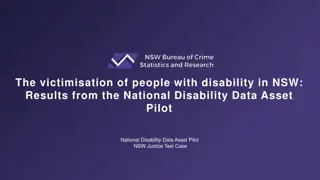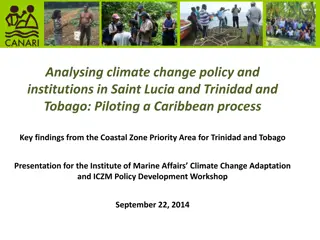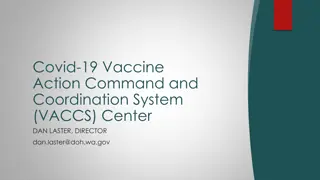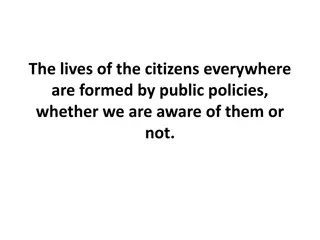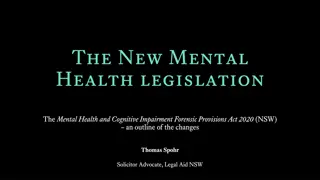Piloting the Washington State Approach to Public Policy in NSW
In this presentation overview, the NSW pilot project explores the Washington State approach and its outcomes, potential policy implications, methodology, and lessons learned. The purpose is to test the feasibility of the Washington State Institute for Public Policy cost-benefit assessment model using NSW criminal justice sector data and establish an evidence base for policy decisions.
Uploaded on Feb 26, 2025 | 2 Views
Download Presentation

Please find below an Image/Link to download the presentation.
The content on the website is provided AS IS for your information and personal use only. It may not be sold, licensed, or shared on other websites without obtaining consent from the author.If you encounter any issues during the download, it is possible that the publisher has removed the file from their server.
You are allowed to download the files provided on this website for personal or commercial use, subject to the condition that they are used lawfully. All files are the property of their respective owners.
The content on the website is provided AS IS for your information and personal use only. It may not be sold, licensed, or shared on other websites without obtaining consent from the author.
E N D
Presentation Transcript
Piloting the Washington State approach to public policy in NSW Ophelia Cowell and Russell Taylor 18 February 2015
Presentation overview Purpose of the NSW pilot project The Washington State approach Outcomes in Washington State Policy potential in NSW Results of the pilot Methodology and model Key inputs Worked example Inventory of policy options Lessons learned 2
Purpose of NSW pilot project The program inventory Universe of programs $~7.4 billion Effective, evidence- based programs $? 3
Purpose of NSW pilot project PURPOSE Test feasibility of the Washington State Institute for Public Policy cost-benefit assessment model Using NSW criminal justice sector data For NSW: Establish evidence base of what works to support policy decisions Develop tool to link the evidence base to resource allocation Strictly Confidential Limited for Distribution 4
The Washington State approach Compare Return on Investment of Programs - Consumer Reports Focus on Return on Investment to tax payers Peer-reviewed Transparent Published Picture here *Washington State 2012 dollars Source: Washington State Institute for Public Policy and Pew-MacArthur Foundation 5
The Washington State approach Outcomes in Washington State Policy effort Directed to areas of higher value Crime Juvenile arrest rates declined 62% relative to national rate of 48% (since 1990) Non drug crime rate dropped (each year since 2005) Crime rates down without increased incarceration Reconviction rates (1990-2006) across all prison release cohorts show downward trends. State incarceration rate ~56% of national rate Return on public investment Maximises benefit Frees resources for most productive purposes Source: Washington State Institute for Public Policy and Pew-MacArthur Foundation 6
Results of NSW Pilot Collection and adaptation of NSW data Estimated system costs and victim costs for NSW Proven feasibility of Washington State model in NSW Demonstrated potential to support policy reform and resource allocation in NSW criminal justice cluster. 7
Methodology and the model Inputs Inputs Effect Size Library Macroeconomic Data NSW demographics GDP deflator Health costs Agency Resource Use NSW marginal costs NSW recidivism rates Program costs Quality adjusted International evidence ? ??? = ?? .?? ?? Process Process 1 + ? ? ?=1 Program impacts Investment NPV, ROI and cashflow Risk-return metric analysis of defined interventions Investment portfolio analysis Inventory of policy options Outputs Outputs Source: Washington State Institute for Public Policy 8
Key CJ Model Inputs Marginal costs of detection, conviction and custodial care. Victim costs. Recidivism rates, resource usage rates, offending base rates: ATOD (assessing long-term consequences of recreational drugs, CAN, DSM-IV epidemiology. Incapacitation, simultaneity and elasticity metrics: evolving in Washington State policing and prison population headcounts Earned income by single year of age and educational attainment. Evidence library: Effect sizes of intervention outcomes. 9
An example - Functional Family Therapy Effect Effect Size Size - -0.341 0.341 Absolute Risk Reduction (ARR) 14% Base rate of juvenile reoffending 60.9% Expected number lifetime felony convictions (w/out FFT) 3.39 FFT cost $3300 pp Cost to crime victims averted $48 392 Cost of CJ resources averted $12 982 NPV NPV = [.14 * 3.39 * ($48,392 + $12,982)] - $3300 = $25,828 pp Source: Washington State Institute for Public Policy 10
WSIPP inventory of policy options Adult criminal justice options Source: Washington State Institute for Public Policy 11
Lessons learned Required skill sets for implementing the model are broad data wrangling advanced analytic skills, econometrics, epidemiology, statistics stakeholder management for access and buy-in Need for durable capability within justice cluster: data collection and analysis must be repeatable on an 18-24month cycle Collaborative project model provides a basis for future cooperation between justice agencies Clear need for quality evidence about what works - evidence of market failure and a clear role for government. Aligns with established Government objectives for economically and evidence informed policy options. 1. 2. 3. 4. 5. 12
